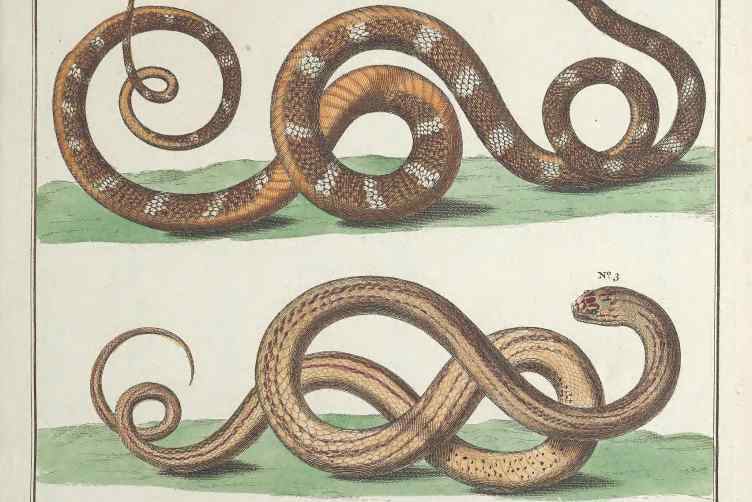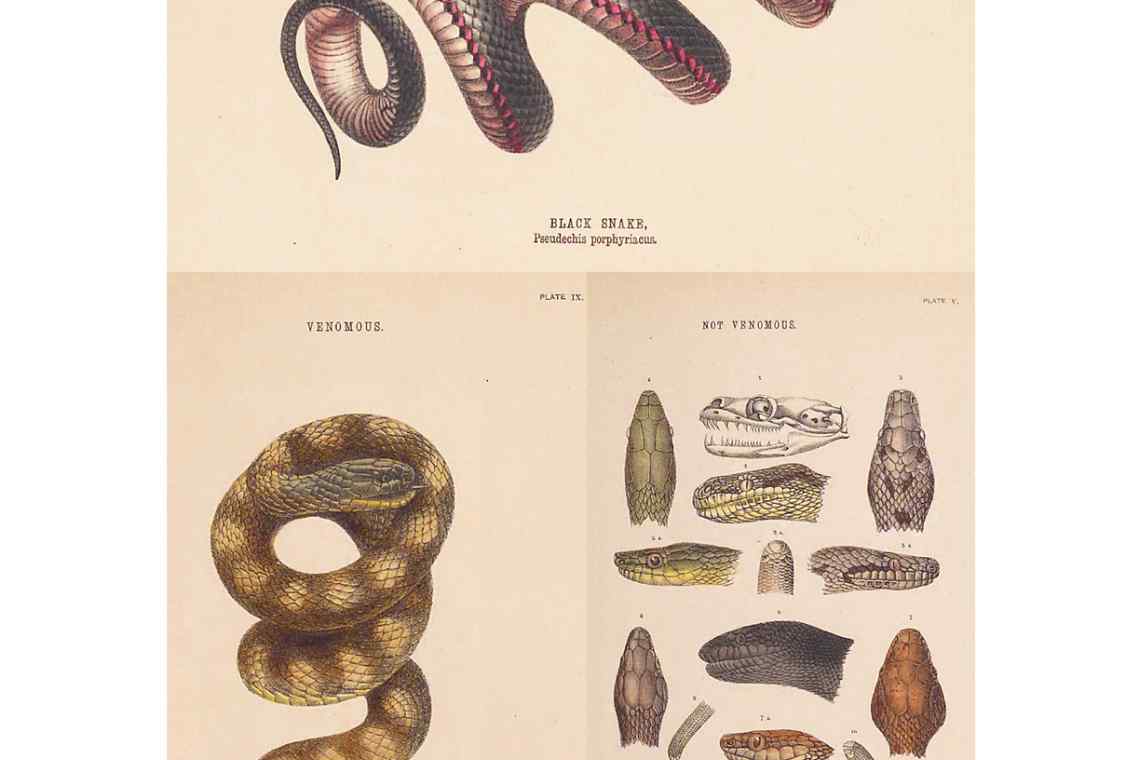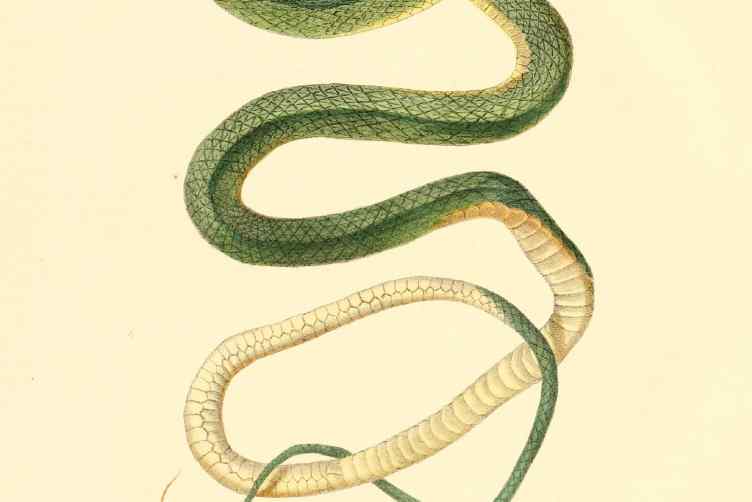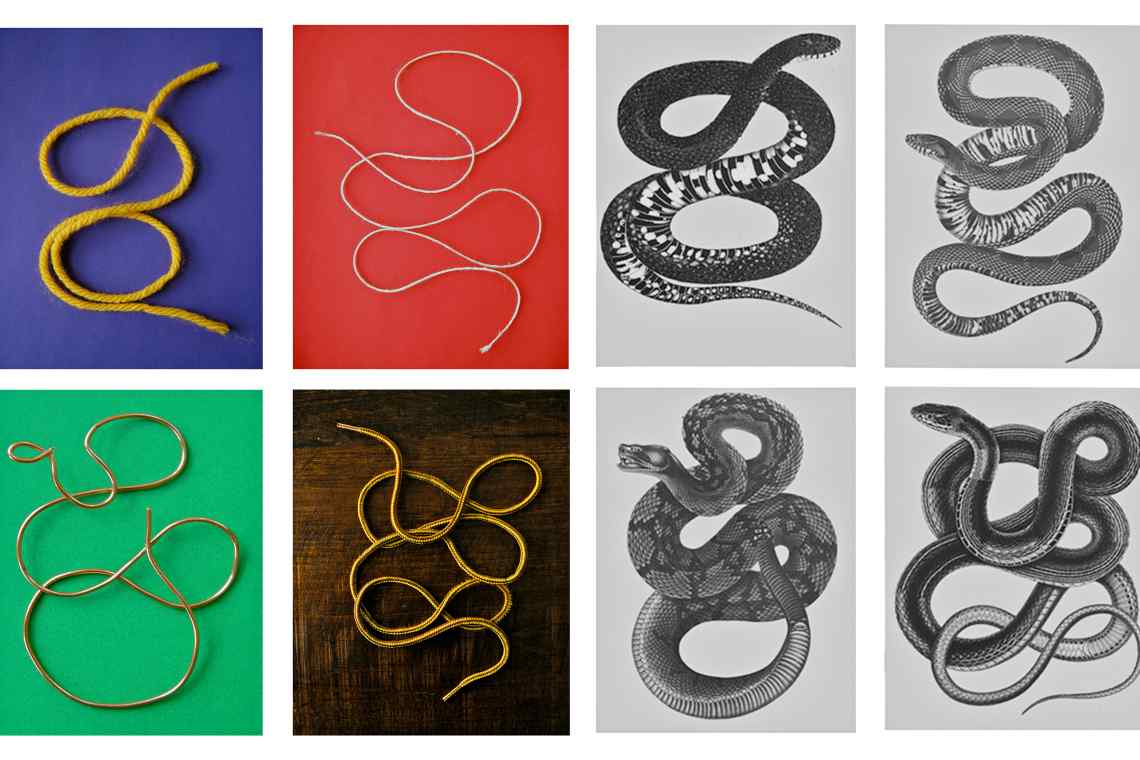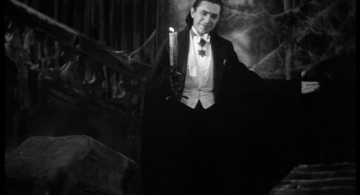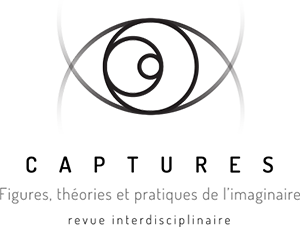Prelude
It is impossible for me to unsee a snake once I have seen it. There is an immediate sense of recognition. If it is a live snake on a path, I stare, unable to take my eyes off it until one of us leaves. That night, dreams about snakes inevitably come to me, coiling and slithering, unexpectedly appear underfoot again and again. In days that follow, I mistake elongated shapes on the ground for snakes at first glance.
I call this phenomenon “snake eyes” — the experience of seeing with my optical eyes, and then later with my mind’s eye. It is a persistence of vision that morphs from a moment of attention into waves of subsequent imagination. I am not afraid of snakes (or, not exactly). The old saying goes “snakes are more afraid of you, than you are of them.” But every time I look at a snake, I cannot shake the feeling that it is me somehow trapped within its gaze. Each snake I see calls forth every other past encounter; I thought I left the snake on that path, but it somehow continues to follow me.
There Be Dragons
The real truth about snake stories is that they are too likely to be untrue.
Karl P. Schmidt1
This is the first sentence of a short report titled “The Truth about Snake Stories,” published by the Field Museum of Natural History in Chicago. I have read this sentence to myself dozens of times in an attempt to understand its exact meaning. There is a certain convolution to its syntax that ties me in a knot and twists sinuously back and forth in my head. For example, take the use of the term “real truth.” Is this pointing to the idea that a (known) truth and an (observable) fact are epistemically different things — truth the domain of subjective beliefs in contrast to facts as demonstrable, verifiable, and objective knowledge? There is “truth,” in a folk sense, but then perhaps “real truth” in the scientific one.
The author, Karl Schmidt, complicates things further by saying that snake stories are “too likely to be untrue.” The set phrase in English, “too good to be true,” is about exaggeration and misperception — it conveys that a thing’s perceived positive attributes are so unrealistic that they are likely not to be true. The phrase “too likely to be untrue” is vexing. It could be interpreted to mean that the stories are very likely to (in fact) not be true or, just as equally, the very opposite: that the stories are so likely that it would be doubtful that they are untrue!
This ambiguity is surprising, for it was not a favored characteristic of 20th century natural history. At that time especially, its overall ethos was of debunking myth and folk knowledge with the most up-to-date scientific understanding, an approach that stood in intentional contrast to the majority of natural history’s sprawling three-thousand-year tradition. That tradition embraced the cryptic or enigmatic as often as it accepted hearsay, stories, and fable as legitimate parts of understanding a creature comprehensively — not as an object, but as a subject woven within a world of relations and understandings.
The tendency to include the questionable and the far-flung in natural history accounts is particularly conspicuous in the natural history of snakes. Consider Edward Topsell’s 1658 book The History of Serpents. Or, the Second Book of Living Creatures and its subtitle:
Wherein is contained the Divine, Natural, and Moral descriptions, with their lively Figures, Names, Conditions, Kindes, and Natures of all venomous BEASTS: with their several Poysons and Antidotes, their deep hatred to Mankinde, and the wonderful work of God in their Creation, and Destruction.
Necessary and profitable to all sorts of Men: Collected out of divine Scriptures, Fathers, Philosophers, Physitians, and Poets: amplified with sundry accidental Histories, Hierogliphycks, Epigrams, Emblems, and Ænigamtical Observations.
Topsell epitomizes how, with snakes, it is particularly easy to get wrapped within the coils of the imaginary and the fantastical, much to the chagrin of serious scientists that followed. Take Hermann Schlegel who, writing almost two hundred years later in his Essay on the Physiognomy of Serpents (1843), felt compelled to dedicate Chapter 33 to “Fables and Prejudices on this Subject.” (102) Schlegel decried how, “The ancients … discovered in the habits of serpents, in their qualities, or even in their form, an inexhaustible fund for setting to work their own fertile imagination.” (102) He goes on to admit, “unfortunately naturalists, in classing such fables with the number of facts, have often embellished with them their descriptions, and thus have contributed to their universal acceptation. … How many qualities have not these philosophers attributed to those beings which have never existed, except in their own imagination!” (107)2
The fable and mystique that Schmidt, Schlegel, and other researchers have seen as hindering a more scientific view of snakes owes much to the fact that the natural history of snakes was, until relatively recently, enmeshed with that of dragons. If that is surprising, consider how snakes and dragons were portrayed together in Charles Owen’s An Essay Towards a Natural History of Serpents (1742), just one-hundred years before Schlegel. In Owen’s book, the close kinship of snakes and dragons as serpents is visually unequivocal. This relationship exists not only by virtue of their crowded fraternizing on the same page, it is also evident through one peculiar and distinctive trait that they share: an upright posture. While Owen’s “Elaphis” and “Mistress of Serpents” are portrayed in the manner familiar to present-day readers (lying on their bellies), “Natrix Torquata” and “An American Serpent” take on the distinctive upright posture characteristic of dragons that he features: the “Basilisk,” “Sea Serpent,” and “Sea Scolopendra.” (Plates 3 and 6)
In the text accompanying the illustrations, Owen makes clear that this vertical posture is not an artistic vagary nor an aesthetic conceit, but a central detail in the natural history of many serpents. In reference to the basilisk, depicted at the top of Plate 3, he writes:
According to Pliny and other antient Historians, this Serpent in its motion, inclines to the erect; it goes half upright, the middle and posterior parts of the body only touching the ground... It does not, like other serpents, creep on the Earth; which if it did, the sight of it would not be frightful, but moving about, in a sort of an erect posture, it looks like a Creature of another Species… (79)
In this way, the (super)natural mystery of snakes and dragons as allied, and often upright, forms within the larger category of serpents took illustrative form. In fact, Owen’s was one among many books of the mid-1700’s that depicted snakes as well as dragons in such prancing postures. Notable among those is the second volume of Albertus Seba’s celebrated visual work, Locupletissimi rerum naturalium thesauri accurata description (“An Accurate Description of the Very Rich Thesaurus of the Principal and Rarest Natural Objects,” 1735), which is replete with snakes moving in the most acrobatically upright ways, fashioning themselves in loop-de-loops of reptilian filigree. One might also notice how Seba’s illustration of an American Snake (an exotic specimen to Europeans of that time), shares startling likeness to the sea serpents found within Conrad Gessner’s Schlangenbuch (“Snakebook,” 1613)3.
Just when Seba’s Thesaurus was published, and soon before Owen’s Essay appeared, so did the first edition of Carl Linnaeus’s groundbreaking Systema Naturae (1735). A cornerstone in the emergence of modern biology, Systema took the first definitive steps to demystify serpents by relegating dragons (and hydras, satyrs, and more) into a taxonomic waste bin that he called “Animalia Paradoxa.” This marked a key moment in the transformation of natural history from an eclectic and syncretic form of knowledge-making into a bona fide science.
While Linnaeus’s new classification disposed of dragons taxonomically, arguably they lived on in spirit, expressed in natural history depictions well into the next century. This is evident in the prancing portrayal of snakes within Journal of a Voyage to New South Wales (1790), illustrated by Sarah Stone, as well as the venomous specimens drawn by Harriet and Helena Scott in The Snakes of Australia. An Illustrated and Descriptive Catalogue of All the Known Species (1869). Although Scott’s portrayal of the Red-bellied Black Snake serves a diagnostic purpose (enabling the snake’s eponymous belly to be seen), its dramatic and spiraling flight suggests something otherworldly, and far beyond the postures that the supple body of this ground-dwelling snake might naturally take. Meanwhile, their portrayal of a “Brown-Banded Snake Hoplocephalus curtus” is even more imaginary, striking a posture reminiscent of the serpent that coils around the Rod of Aclepius, or the Caduceus; this stands in sharp contrast to the conventional, partial illustrations of snake anatomy in the same volume. For all of their exacting morphological detail, the illustrations seek to express far more about the snakes than simply their biology. At every turn, the ambiguous vibrancy of the snake exceeds the scientific facts that seek to define them. The multiplicity of the natural, moral, accidental, enigmatic, and sundry found in these representations, means that a snake is always more than a snake.
The Serpents Within
The snake is as much symbol as animal, and this oversaturation
of meaning prevents us from seeing the snake clearly.
Paul McAdory4
In the film Raiders of the Lost Ark (Steven Spielberg, 1981), the intrepid explorer Indiana Jones, upon discovering a pit full of snakes that he must crawl through, muses, “Snakes. Why did it have to be snakes?” We can ask ourselves the same question: why, among all of life’s myriad diversity, have snakes come to occupy such a central and abiding place in our imaginaries — individual and collective, psychological and cultural? The “oversaturation of meaning” begs a significant question.
In one sense, McAdory’s claim summarizes the case that I’ve made up to now — that the history of natural history illustration reveals how difficult it has been for snakes to shed the cloying skin of the mythic, mysterious, and the supernatural. Preconception clouds our vision and our ability to view snakes objectively. Perhaps how we picture and imagine snakes is affected by not only our pre-conceptions of them, but even more deeply by our pre-perceptions. But what could a “pre-perception” even be? Consider the metaphor, “snake in the grass” (to refer to a treacherous person or a hidden danger) or the saying, “if it were a snake, it would have bit you” (for something that was right there but went unnoticed). These and related idioms seem to betray an underlying preoccupation with seeing snakes that are otherwise concealed. The Snake Detection Hypothesis (Isbell 2011) seeks to make sense of this. It posits that, given that constricting and venomous species have been such acute threats over the course of our evolution, humans and other primates have evolved exceptional eyesight for the purpose of visually detecting snakes5.
As sweeping as the hypothesis may be, it is also quite testable. Its key prediction is that humans should have a special and innate predilection for visually recognizing snakes, and a plethora of scientific studies appear to bear this out. Not only do human infants and adults visually detect snakes more quickly and accurately than other organisms6, they also spot the proverbial snake in the grass inordinately well: camouflaged images of snakes recognized more readily and with greater accuracy than identically obscured pictures of other familiar animals like cats, birds, or fish (Kawai and He, 2016). This figure shows parts of the 20-step sequence in which snake images were artificially camouflaged by a visual noise algorithm. Most human subjects identified the image as a snake by step 8 (60% obscured), while it took until step 10 or later for images of birds, cats, or fish to be correctly recognized.
Crucially, in the Snake Detection Hypothesis, recognition is not a matter of learned pattern, cultural preconception, or deliberate reflection but instead something deep-running and far more visceral. It predicts that evolutionary traces of this peculiar visual acuity should be found in other members of our primate family tree as well; indeed, experiments in monkeys show that they share our special ability to recognize snakes rapidly and specifically (Shibasaki and Kawai, 2009; Kawai and Koda, 2016)7.
Perhaps most significant and most profound, however, are studies that reveal that humans visually detect snakes before they are even consciously aware of seeing them (Öhman and Soares, 1993) — hence pre-perception. Such observations suggest the possibility of some form of snake-specific neural mechanism embedded within the primate visual system that prepares us to recognize them8. If true, snakes would, in a real sense, already be tucked inside of us and our imaginary — a latent recognition just waiting to strike. In 2013, researchers Quan Van Le and collaborators appeared to identify just such a neural mechanism in macaque monkeys in an area called the medial and dorsolateral pulvinar, a distinct anatomical structure found only in primates. In lab-reared, snake-naïve monkeys, the pulvinar neurons responded faster and stronger when subjects were presented with images of snakes compared to monkey faces, monkey hands, or geometrical shapes9. If we acknowledge that snakes have been a serious threat to primate survival for eons, the Snake Detection Hypothesis makes adaptive sense. In turn, it fundamentally challenges any assumption that we, as humans, would be able to see, visualize, or portray snakes with the kind of disinterestedness that scientific objectivity demands. Seeing snakes with unsullied eyes becomes an impossibility of not only vision, but imagination.
Reflecting on the work of Seba’s Thesaurus, of Sarah Stone, Harriet and Helena Scott, John Edwards Holbrook and many other illustrators of snakes besides, it becomes hard not to wonder how much of their evocative renderings sprang from deep within their own unconscious minds — not in any Freudian sense, but in terms of the encoded visual experiences of primate ancestors passed on and refined over millions of years. A certain irony of portrayal emerges: what makes a snake a “snake” from a human point of view — the sinuous pattern of serpentine curving and coiling — turns out to be the very feature that natural history illustrators have consistently taken the most liberty in depicting. Certainly, artistic interpretation is essential in transforming what was a crumpled, discolored, unfamiliar reptile specimen awkwardly stuffed into a jar into a vibrant and vital creature on a blank page — illustration is a kind of creative alchemy. The claim is not that illustrators completely invented the snake poses, but that they were also drawing from a sequestered, pre-perceptive reservoir of form, giving shape on the page to something inchoate and within. Another way to say this might be that, as far as natural history is concerned, there are no genuine pictures of snakes that aren’t at the same time also somewhat imaginary.
Solving the “Kekulé Problem”
In the snake, we seem to have a creature that we have seen before we even lay eyes upon it. Like an ouroboros biting its own tail, we are caught up in a circularity of subjective objectivity and objective subjectivity, the linearity and “straightforwardness” of meaning folds upon itself into a loop of diffracting ambivalence. The snake is the obverse of an afterimage; it is a sort of anteimage that fuels both our vision and our visions. In this light, perhaps the ambiguous claim that “The real truth about snake stories is that they are too likely to be untrue” communicates the snake’s layered complications with an uncanny precision.
One of the most famous of snake stories may be that of the German chemist August Kekulé10. “I was sitting, writing at my text-book; but the work did not progress,” wrote Kekulé, “my thoughts were elsewhere. I turned my chair to the fire and dozed” (Japp, 1898, cited in Rothenberg, 1995: 424). In that moment, Kekulé was struggling to imagine the configuration of the chemical benzene, a foundational component of organic chemistry, but one whose structure was vexingly elusive. Given what was known of chemical bonding at the time, the composition of the benzene was at odds with all previously known forms, until a vision came to him:
Again the atoms were gamboling before my eyes. This time the smaller groups kept modestly in the background. My mental eye, rendered more acute by the repeated visions of the kind, could now distinguish larger structures of manifold conformation: long rows, sometimes more closely fitted together; all twining and twisting in snake-like motion. But look! What was that? One of the snakes had seized hold of its own tail, and the form whirled mockingly before my eyes. (Japp, 1898, cited in Rothenberg, 1995: 424).
From this “twining and twisting” ouroboros, Kekulé deduced that the structure of benzene was a ring of carbon atoms, although not like any before conceived — not a set circle of bonded atoms, but a round of writhing electrons that oscillated between singly-doubly and doubly-singly bonded poses.
The snake spinning in Kekulé’s mental eye appeared suddenly before him (“But look! What was that?”) just as one might discover a physical snake at one’s feet. The structure of benzene postulated by the renowned Edward Frankland was not only linear, its diagrammatic rendering in his 1866 textbook of chemistry was surprisingly evocative of a slithering snake in its form. At just that same time (1865 and 1866), August Kekulé published his breakthrough papers hypothesizing benzene’s structure as that of a “ring” akin to an ouroboros.
Another storyteller, novelist Cormac McCarthy, has pointed to Kekulé’s discovery as highlighting a philosophical problem:
The problem of course — not Kekulé’s but ours — is that since the unconscious understands language perfectly well or it would not understand the problem in the first place, why doesn’t it simply answer Kekulé’s question with something like: “Kekulé, it’s a bloody ring.” To which our scientist might respond: “Okay. Got it. Thanks.”
Why the snake? That is, why is the unconscious so loathe to speak to us? Why the images, metaphors, pictures? Why the dreams, for that matter.
Like Indiana Jones, once again the question is why snakes? McCarthy claims that the “unconscious is a biological system before it is anything else. … [T]he unconscious is a machine for operating an animal.” To that, the Snake Detection Hypothesis would seem to offer an elegant solution to the “Kekulé problem,” with the machine of the unconscious, of the pre-perceptive, having been fashioned by evolution by natural selection. Why the images, metaphors, and pictures? Because our lives have, quite literally, depended on them — our sharp vision and inherent visuality a gift of survival. Predator and prey, competitor, or symbiont, we dream of and envision animals in this way because we ourselves are animals, members of a shared and enduring ecology.
It is no surprise that the anteimages that we carry within us come to be projected through our psyches and our cultures as visions, symbols, and deities — Quetzalcóatl of Mesoamerica, Naga of Hindu lore, the serpent of Asclepius in Ancient Greece, and too the Garden of Eden. The ciphers, totems, and dragons that take the form of snakes are as endless as the dualities that they embody. Our panoply of mythic serpents is a natural consequence of having the snake present within us and moving among us at the same time; Kekulé’s discovery of a molecule with a mysterious and dual character may be another such consequence.
There are no genuine pictures of snakes that aren’t at the same time also imaginary. The Kekulé Problem is in fact an opportunity, just as are the historical illustrations of snakes slithering upright — both present opportunities to understand the symbolic and the mythic as not only primal, but also organic. Whether drawing serpentine shapes, or being drawn to them, animal images trace out our participation in an entangled semiotics of natureculture that is visual, material, and embodied all at once.
- 1. SCHMIDT, Karl P. 1929. “The truth about snake stories”, Leaflet, no10, Chicago’s Field Museum of Natural History, p. 1. Online.
- 2. A strictly scientific approach was befitting Schlegel’s position as staff at the National Museum of Natural History in Leiden, where he later became director. State museums were instrumental to, and symbolic of, the evolution of natural history from the idiosyncrasies of private collections and Wunderkammern to the far more systematic endeavor of natural history as a science.
- 3. Recent research by Phil Senter, Uta Mattox and Eid E.Haddad has noted Conrad Gessner’s Schlagenbuch as a key reference for the entangled histories and kinship of snakes and dragons as serpents (2016). However, the trait that I highlight in this essay as visually diagnostic of dragon influences — an upright posture — is notably absent in the snakes illustrated within Schlagenbuch. Despite millennia-long slippages between snakes and dragons, in Schlagenbuch snakes are portrayed almost exclusively as belly-crawling animals while dragons and sea serpents are depicted upright. In this way, Gessner’s book proves to be something of a departure from the usual conflation of snake and dragon posture found in natural histories that came before and after, throughout the 1700s and 1800s.
- 4. MCADORY, Paul. 2020. “How My Pet Snake Taught Me to Really See”, New York Times Magazine, December 28. Online.
- 5. The danger that venomous snakes pose worldwide may not be as apparent to residents of the northern hemisphere, but in 2018 alone 5.4 million people were bitten by snakes globally, with someone dying of a venomous encounter every five minutes (Ochieng, 2019).
- 6. Other fauna and flora tested besides snakes in regards of human visual attention include lizards, spiders, birds, mushrooms, and flowers. In all cases human subjects are being tested against pictures of these organisms, not the organisms themselves. This makes sense in terms of controlling and standardizing the study procedures, however other researchers have raised questions about the studies and the limitations of them since the situation of interest is an encounter with a living snake.
- 7. While there have also been studies on visual attention to (and fear of) snakes in other mammals, more well-known are the ongoing informal experiments on fear exhibited by domesticated cats when presented with cucumbers. This internet meme, known generally as “cats versus cucumbers,” has generated much speculation in the popular press. Some suggest that startled, jumping cats fear elongated vegetables because they resemble snakes. Others hypothesize that cats are simply startled by the sudden appearance of objects nearby, regardless of their shape or appearance. One of the more popular compilations is called “Funny cats scared of cucumbers. Cat vs cucumber compilation. Funny Cat Compilation” and can be viewed on Youtube.
- 8. A snake-specific pre-perceptive “fear module” in the brains of primates has been hypothesized by Öhman & Mineka, one that is “relatively encapsulated from cognition.” They write that, “neither the elicitation nor the conditioning of snake fear in humans requires that snakes be consciously perceived.” They consider snakes as “prototypical stimulus for an evolved module of fear.” (2003: 5) Recent electrophysiological studies on seven to ten-month-old human infants by Julie Bertels and collaborators provides support for the Snake Detection Hypothesis and the idea that recognition of snakes is a pre-perceptive as well as “inborn, brain-anchored mechanism to swiftly detect snakes based on their characteristic visual features.” (2020)
- 9. The responses to images of coiled and uncoiled snakes showed no significant difference in the study by Quan Van Le (2013). Meanwhile, other researchers found some evidence that coiling shapes (of snakes or otherwise) elicited more rapid visual attention than that of long, thin shapes (LoBue and DeLoache, 2011).
- 10. Like all “snake stories,” the veracity of Kekulé’s account has been subject to some skepticism, however whether Kekulé “truly” saw the snakes in his mind’s eye or created the story after the fact as a metaphor is immaterial to the fact that Kekulé saw a cognitive necessity to connect the discovery to the imagery. For a defense of Kekulé, see Franz Strunz’s “Preconscious mental activity and scientific problem-solving. A critique of the Kekulé dream controversy” (1993).

